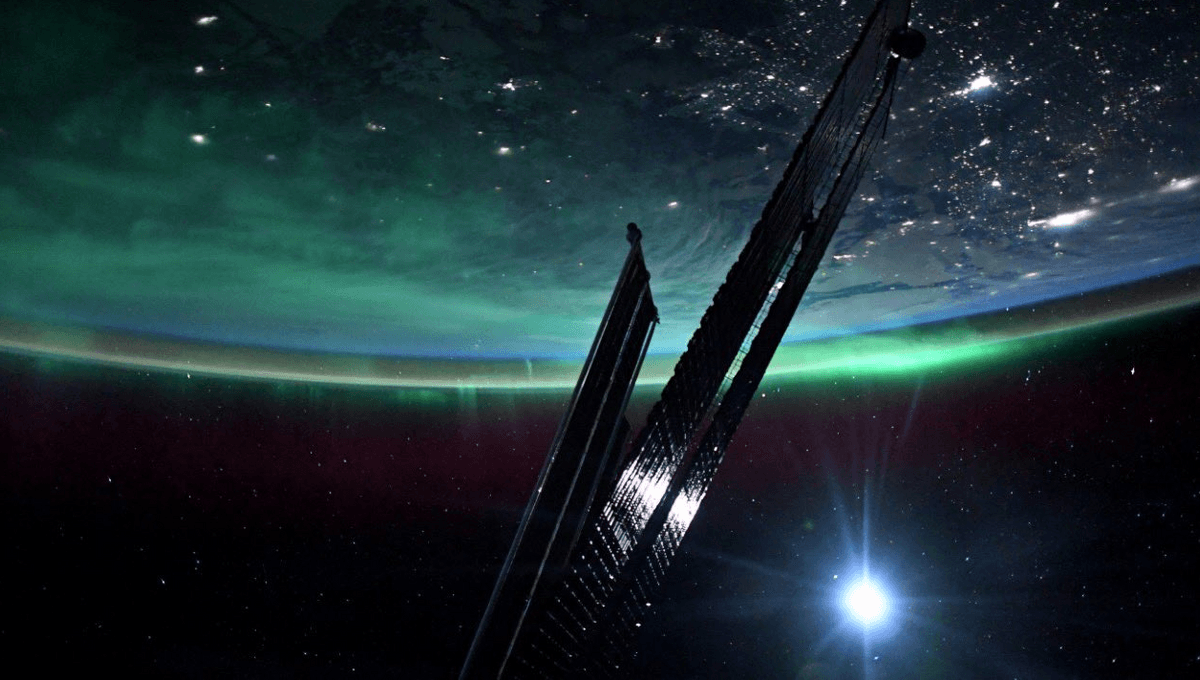
If you live at high latitudes or spent any time on social media, you’ve probably noticed that we’ve been having some great auroras recently. Astronaut Josh Cassada took advantage of an angle available only to a few to take the incredible photo above. It’s beautiful enough on its own but prompted a flood of responses from people showing their own views.
Auroras wax and wane in response to the eleven-year-long solar cycle. The last few cycles have not been particularly intense when it comes to sunspots and solar storms (a very inconvenient fact for climate change deniers who want to blame recent global temperatures on increased solar activity).
The current cycle, number 25, isn’t expected to peak until 2025 but has already matched the last cycle’s peak. The last time the Sun was this active good cameras were far less common. Consequently, the images being taken now are as good or better than anything that has been taken before.
A particularly appropriate response to Cassada’s photo shared on Twitter came in the form of this shot of the International Space Station (ISS) passing above the aurora.
Along with a similar (although not as intense) video.
Sadly the best images of the auroras usually require going to regions far from where many people live – both to get close to the Earth’s magnetic poles and to avoid light pollution. This time, however, even some major cities are getting a treat.
The auroras revealed here are the product of a G3-class geomagnetic storm and at least one coronal mass ejection, leading to sightings as far south as Colorado and Missouri.
More may be to come, with the solar wind flowing out of a coronal hole expected to reach Earth on Sunday or Monday.
Many teams of astronomers try to predict the number of sunspots or solar flares at a cycle’s peak. Last week already exceeded some of these, and we’re closing in on the higher estimates. It’s possible the peak of Cycle 25 has come early, but some solar scientists now think we have greatly underestimated this cycle’s strength. Bad news if you’re launching or controlling satellites, but exciting times for those who enjoy the spectacle.
Then again, even the relatively unspectacular Cycle 24 had its moments.
Another reason we’re being treated to such amazing images is that better monitoring of the Sun, and the capacity to disperse information through the Internet, means people know when to go looking. Although aurora quality can’t be predicted perfectly, sites like Spaceweather.com can offer a good indication of prospects for those who can’t just look out the window of a space station.
Of course, a few flat-Earthers had to respond to Cassada claiming the image was phony – presumably because you can see the curve of the Earth. Some referenced debunked claims about the Moon-landings being faked – on the basis that no stars are visible in them, noting that some can be seen in Cassada’s image. Respondents have patiently explained that this is because Cassada took his photograph at night – the bright object is the Moon, not the Sun – while Apollo 11 landed in daylight. You can probably guess how many people that convinced though.
Source Link: The Current Auroras Look Amazing From The Space Station As Well